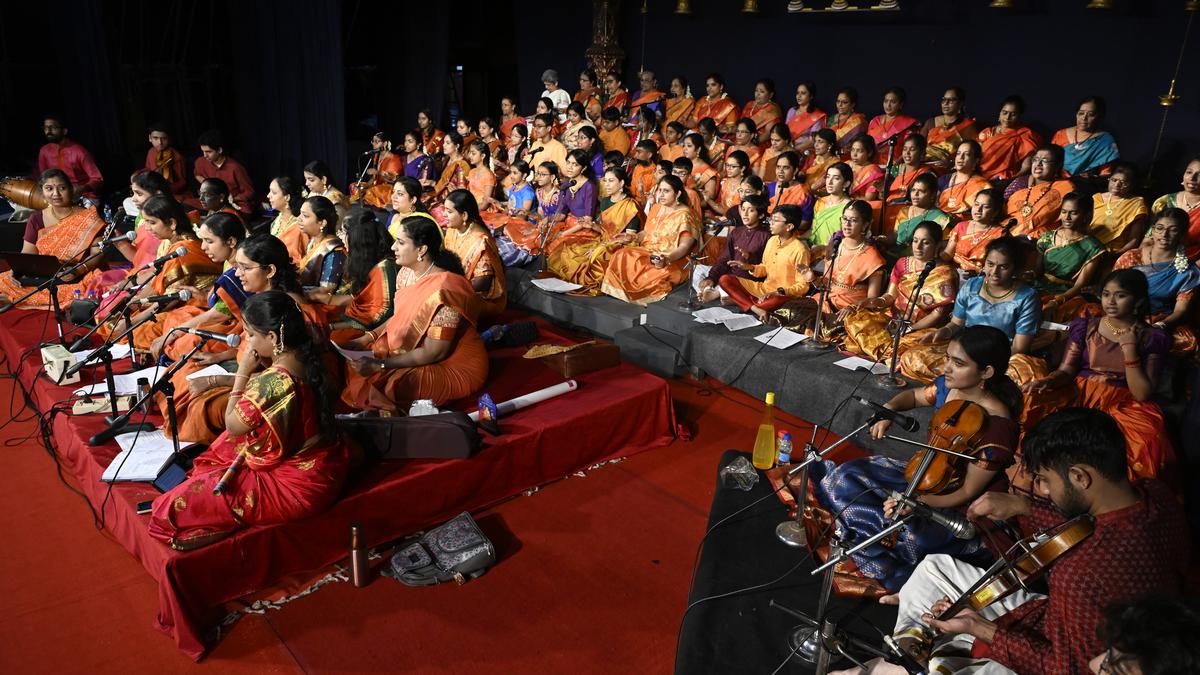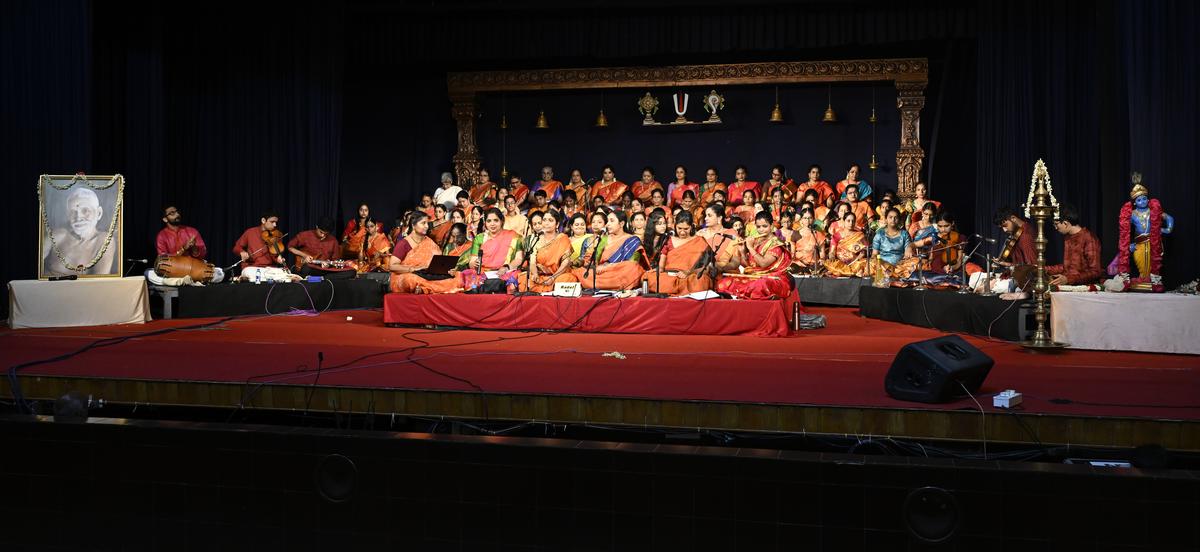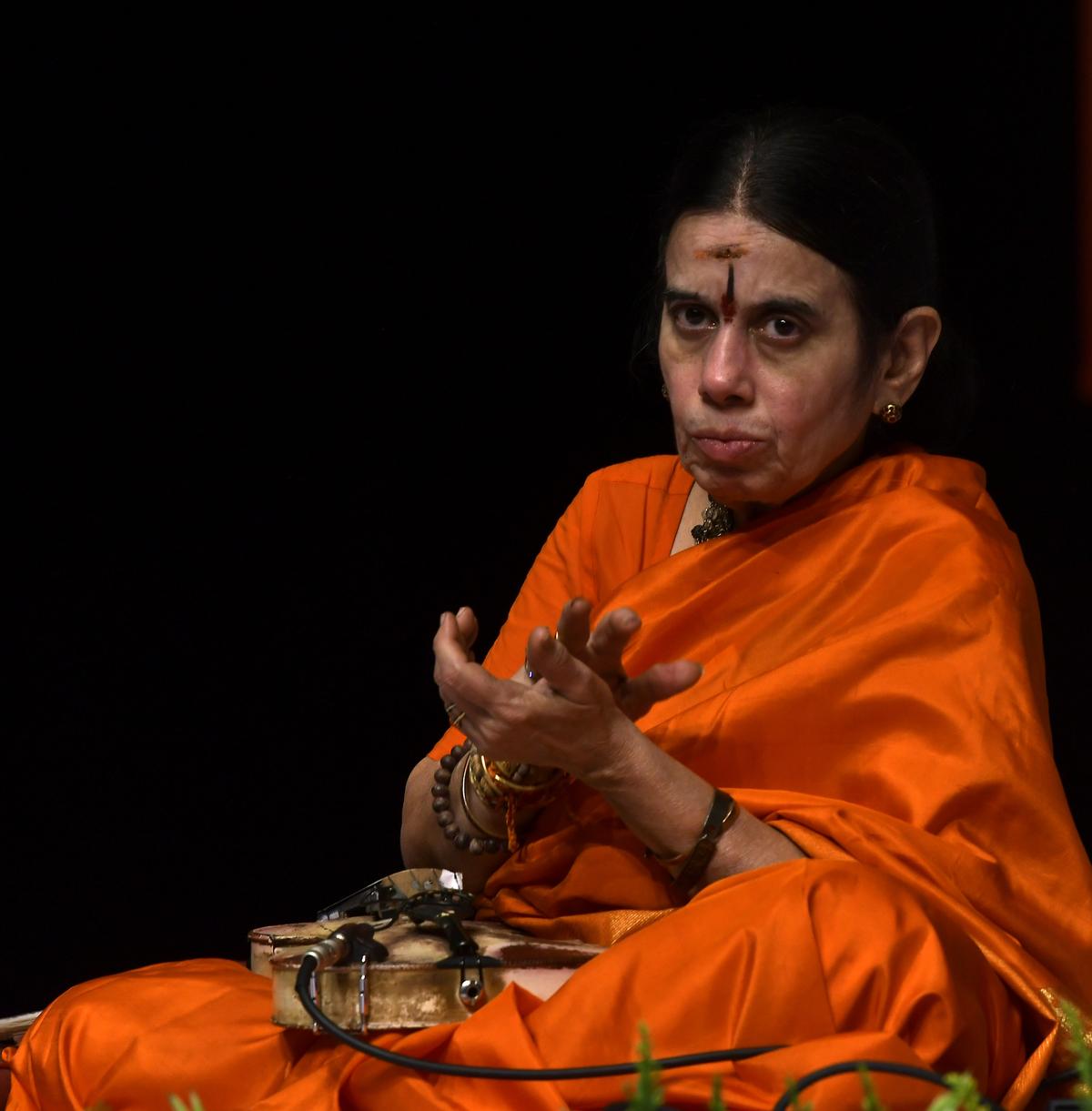- July 9, 2024
How violin exponent A. Kanyakumari put together a Carnatic instrumental choir

The Guruvandanam Choir at Narada Gana Sabha in Chennai
| Photo Credit: R. Ragu
Conducting a large-scale Carnatic music choir is generally an energy-sapping exercise with disproportionately meagre returns in terms of melodic aesthetics. But not when you have someone as accomplished and inspiring as Avasarala Kanyakumari at the helm.
So, it was an enchanting evening as Team Mohana Dubai recently organised ‘Guru Vandanam 2024’ — a tribute to the violin maestro, who was also the chief mentor of the ensemble — at the Narada Gana Sabha Hall under the auspices of Brahma Vidya Trust. Over 80 vocalists and seven instrumentalists came together to perform 10 select compositions of Saint Annamacharya, set to music by Kanyakumari, and a tillana named ‘TriShakti’, created by her.
Kanyakumari is on the verge of completing 60 years of her journey as a performing violinist, and her rich vein of experience was all too evident as the 10 kirtanas, tuned in mellifluous ragas and set to simple talas, were performed. Not just the melodic aspect of the songs, but the lilting interlude patterns too asserted what a fine amalgam of precision, finesse and versatility she is.

The choir was mentored by violin exponent Kanyakumari
| Photo Credit:
R. Ragu
Annamacharya (1408-1503), a philosopher and composer-singer hailed from Tallapaka, near Tirupati. He is considered an incarnation of Nandaka, the sacred sword of Vishnu, which obliterates maya or illusion. A prominent disciple of Srimath Adivan Satakopa Yatheendra Mahadesikan, the first Jeeyar of Sri Ahobila Math, Annamacharya conveyed intricate and rich philosophical ideas through songs written in lucid Telugu and Sanskrit, numbering a mammoth 32,000. The bard used these compositions as a means to pour out his deep devotion to predominantly Lord Venkateswara of Tirumala and Lord Nrusimha of Ahobilam.
The songs presented on the day were ‘Ambujaksha namo’ (Nagaswaravali-Khanda Chapu), ‘Evvari vaado’ (Behag-Khanda Chapu), ‘Papamu punyamu paraga’ (Sivaranjani-Adi), ‘Pondhaku athma’ (Bagesri-Adi), ‘Ithara dharmamulandhu’ (Mohana Kalyani-Khanda Chapu), ‘Analamu suryudu’ (Surya-Adi), ‘Nerupari innitanu’ (Tilang-Eka), ‘Innallu nandhu nindhu’ (Shanmukhapriya-Adi), ‘Machika prapanchapu’ (Vasanthi-Adi) and ‘Vennnalu selavi’ (Chakravakam-Eka), followed by the tillana.
A word about the concept of the ‘TriShakti’ tillana as reasoned by Kanyakumari. Kannada, Vasanthi and Shivashakti, the three ragas featuring in the tillana, denote herself, her guru MLV and paramaguru GNB, who created the last-named raga. To draw from a musical parlance, either arohana or avarohana order may be adopted, according to tradition, when offering salutations to one’s lineage of gurus and she chose the former.

A. Kanyakumari completes almost 60 years of her musical journey
| Photo Credit:
Shiv Kumar Pushpakar
The ensemble was led by several music teachers of repute. Ramashree Alladi’s articulate presentation of the meaning before each song was a value addition. However, instruments taking turns to playing in the background during the narrative not only proved a distraction but also compromised audibility.
Team Mohana was founded in 2009 to encourage young talent in classical music. “My grandfather Kothamangalam Subbu was the author of the classic Tamil novel and film Tillana Mohanambal and the organisation draw its name from it as also from the beautiful raga Mohanam,” said Anand V. Subramanian, a founding member.
Tallapaka Meenalochani, belonging to the Annnamacharya lineage, was a special invitee at the event.




